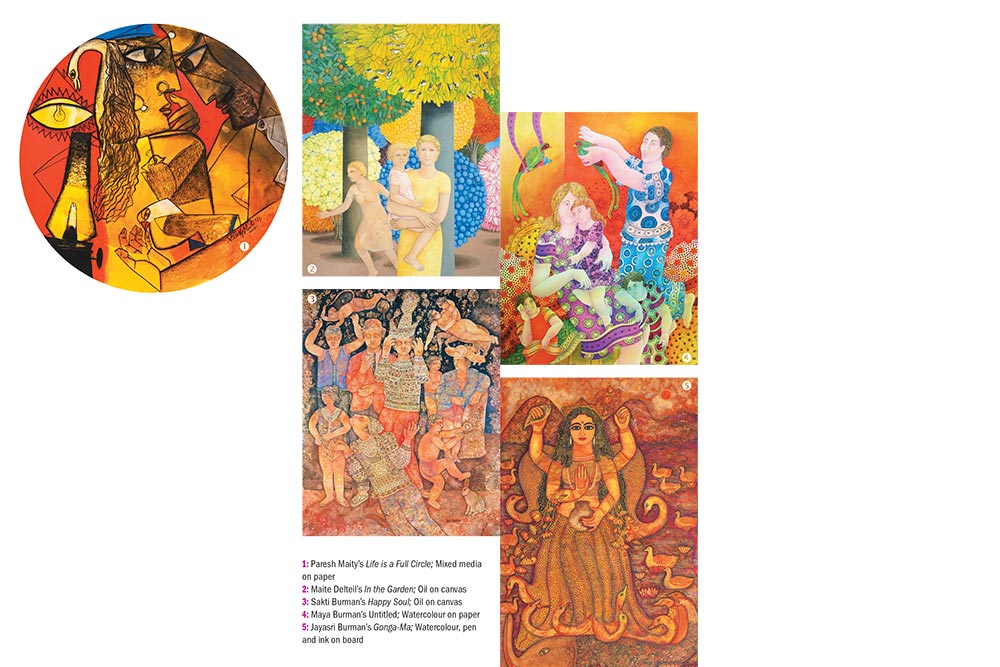Sakti Burman is drawing on a cloth napkin that we’ve purloined from the Novotel, Mumbai, the sweeps and strokes observed by a table full of women guests who will attempt to snog his effort once he’s done. They’re not getting away with it, though — that precious napkin also has drawings by his wife Maite Delteil and daughter Maya Burman, both acknowledged as artists to watch out for (and collect) in their native France as much as in India. (A signature by actor Katrina Kaif will make that napkin more precious — but about that, more later.)
Sakti Burman, “head” of the clan, began his career in Calcutta, and though he has enjoyed heady success in India in, particularly, the last decade, he built an enviable reputation for himself in Paris, where his fine art prints at the start of his career were exhibited alongside those by Pablo Picasso and Marc Chagall. However, it was his “marbling” style, mixing water with oil to create a mosaic-like background reminiscent of the ancient frescos in Italy, that made him stand out. That and his ability to create enchanted gardens where figures of friends, family, gods and goddesses and mythological beings result in idylls almost of paradise.
His wife, Maite Delteil, dwells in a somewhat similar idyllscape, but there is no magic realism at play here. Instead, she captures everyday scenes, often around beautiful gardens with flowers, trees and birds, where lovers or families abound. The approach has a Western formalism, but it is also playful, an element their daughter Maya Burman has seized upon. “She had been far more influenced by her father earlier,” shares an analyst, “but in recent times, she appears to be drawn to her mother’s use of primary colours.”
If anyone is adhering closest to the path set by Sakti, it is his niece Jayasri Burman — even though from medium to style to subjects (entirely based around Indian mythology), hers appears to be a departure. Instead of being placed randomly, her figures occupy the centre stage. But in creating something that is fantastic — swans emerging from a goddess-like figure’s hair — she is more akin to her uncle’s work than that of her husband, the maverick Paresh Maity, who is primarily a colourist (shades of Maite) and arguably India’s greatest watercolourist. That he visited Sakti Burman’s studio in Paris during his first European outing and long before he knew Jayasri merely intertwines their fascinating careers together.
Paresh began his career making watercolours — a medium that continues to fascinate him, and to which he returns intermittently — but it is his canvases with their primary colours and portraits (and occasionally landscapes) that continue to be his biggest market. While Jayasri has in recent years experimented with sculptures, Paresh has been there, done that, and moved on to working more in the installation space. Both have a growing number of dedicated collectors all over India, part of the West as well as in South-east Asia.
They move seamlessly to create works in which one artist’s magically drawn figures join effortlessly with the others’ — creating such a tapestry on a napkin on a dinner table on one such outing in Mumbai. Katrina Kaif should consider herself lucky that she got to sign it, even though it was I who got to keep the “artwork”.
—The author is a Delhi-based writer and curator











